This baked amaranth pudding with dried sweet cherries, vanilla and cinnamon is a deliciously flavorful gluten-free and dairy-free dessert.
*This post is sponsored by CP Kelco. All content and opinions are my own.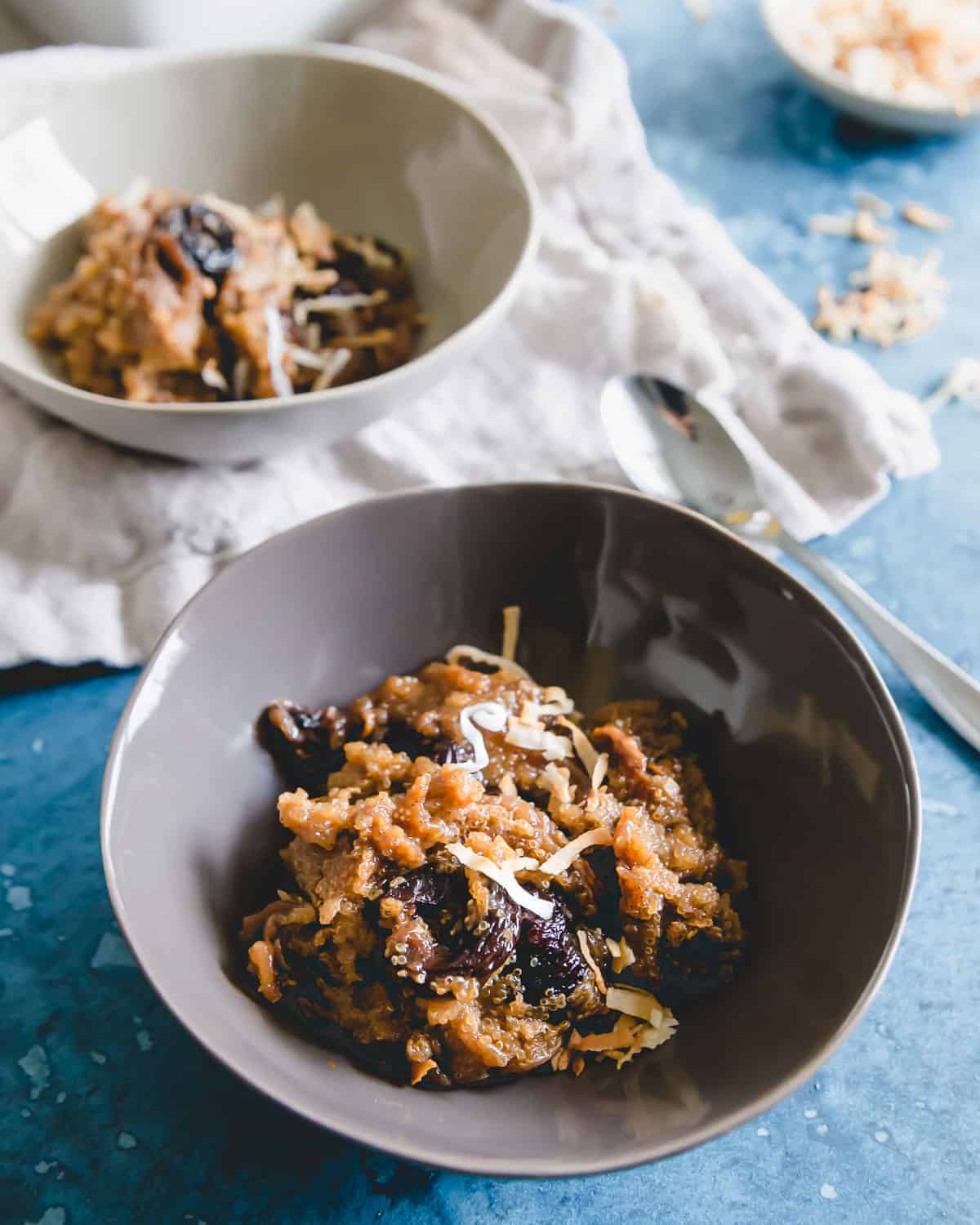
Amaranth is one of those bulk bin items I avoided up until a few years ago. Focusing lately on more plant based meals and gluten-free grain options though has brought this “pseudo-cereal” as it’s called, to have a more of a main role in my day to day diet.
DETAILS ON AMARANTH
Like sorghum, quinoa, buckwheat and millet (to name just a few), amaranth is naturally gluten-free.
It’s a highly nutritious ancient grain with both fiber and protein and a particularly good source of manganese, magnesium, iron and phosphorous.
It has an earthy, nutty flavor when cooked and is used in similar ways to other grains like wheat and oats.
You may have seen it as puffed amaranth in a breakfast buffet before or in snack bars, another common way it’s used as an ingredient.
In fact, I think my first exposure to amaranth was in its puffed state during a trip to Mexico about 9 years ago. It was one of the “topping” options in the yogurt/oatmeal/cereal section of a breakfast buffet.
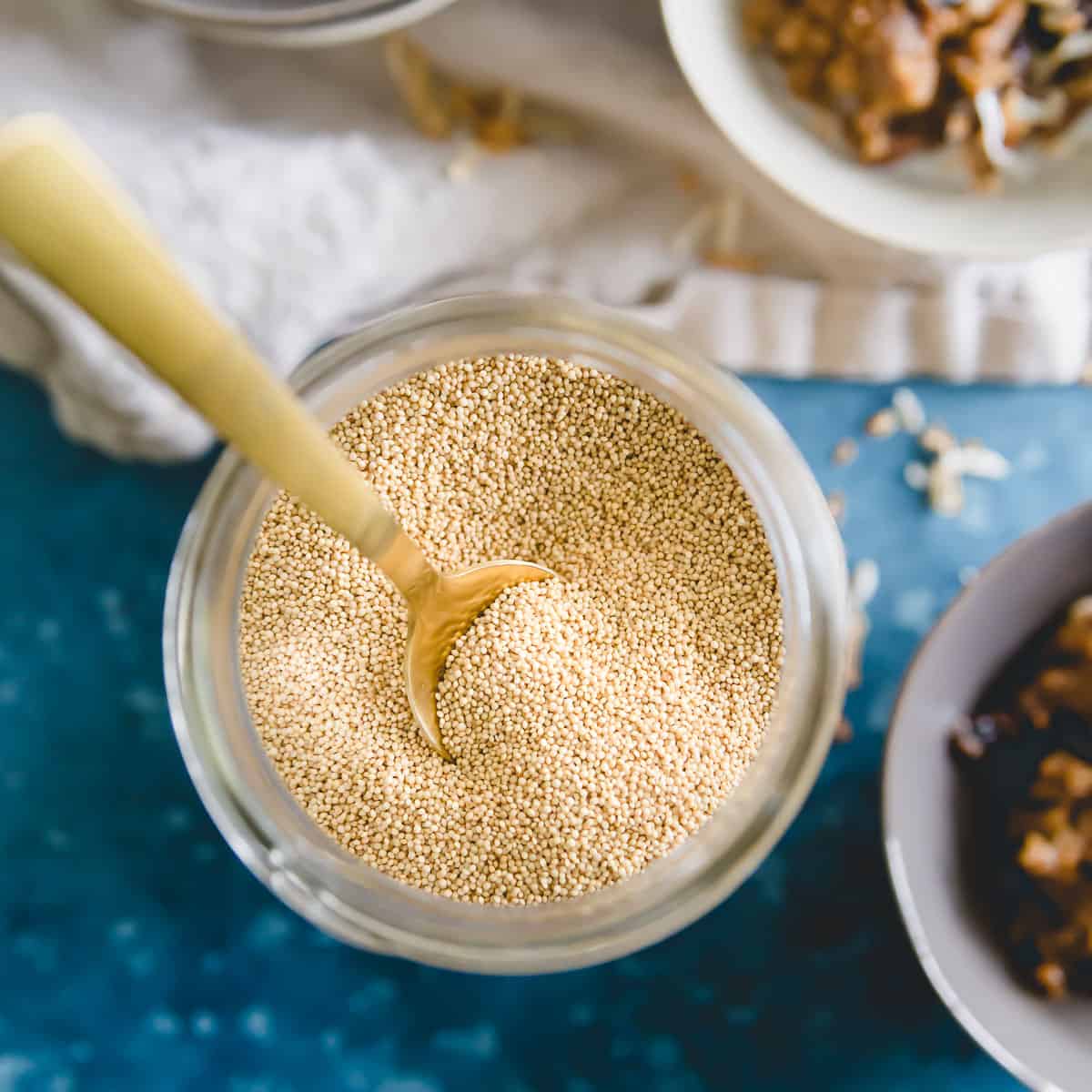
AMARANTH PUDDING
Because it can be treated like other grains and rice, amaranth makes an excellent base for pudding!
This baked amaranth pudding is a far cry from an instant pudding packet and more so the kind of recipe you make when you want a hearty, comforting and cozy warm pudding.
Check out this Coconut Caramel Coffee Pudding for another delicious baked pudding variation.
Packed with nutrition from the amaranth, lots of sweet delicious flavor from dried sweet cherries, vanilla bean paste, almond extract and cinnamon and a fun crunchy toasted coconut topping for texture, this gluten-free baked pudding has it all.
Using unsweetened almond milk as the liquid in the amaranth pudding also keeps it dairy-free making this a dessert practically anyone can enjoy.
The appearance may be humbling but this baked pudding is so incredibly flavorful with a really unique texture. It’s a must try!
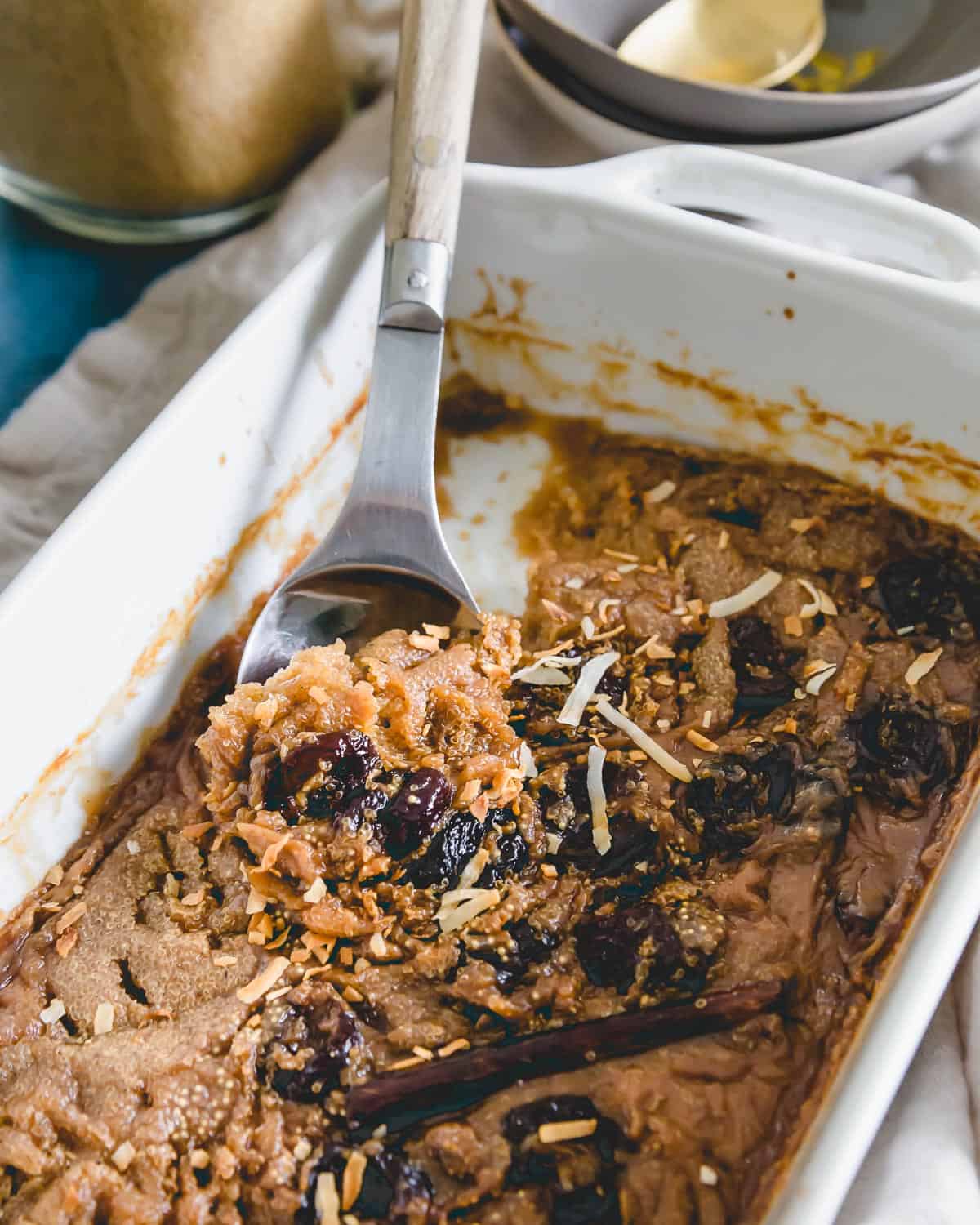
If you’ve followed along on Instagram in the last few months, you’ll know I’ve recently taken to making my own almond milk at home. It’s one of those things that seems a bit daunting but is actually quite easy to do yourself if you have a high-speed/powered blender like a Vitamix or a similar brand.
I got into homemade almond milk out of frustration with the options available to me in my local stores. If the milks didn’t have ingredient lists a mile long, they usually cost a small fortune. So, I started making my own.
I’m still doing that but it’s not to say I don’t ever buy store bought non-dairy milks when they’re on sale and I can find a brand whose ingredient list isn’t the length of a master’s level thesis.
When you make nut milk at home, the ingredients are simply nuts + water. In the store, however, brands tend to use stabilizers in their ingredients.
WHY DO STORE-BOUGHT PLANT MILKS USE STABILIZERS?
Manufacturers add ingredients to improve the shelf life, taste and texture of their products. To appeal to people used to the taste of dairy milk, brands will try to duplicate that creamy “mouthfeel”.
Some plants, beans and nuts used to make non-dairy milk can have an earthy taste or grittiness to them. Also, most of the beverages you’ll find in the store have included extra protein, vitamins, minerals, and other nutrients.
To help all of these ingredients play nicely together, manufacturers reach for a stabilizer. A stabilizer helps ensure that each glass you pour has the same ingredients and same taste.
The choice of the stabilizer used is one of the main deciding factors for me when purchasing store bought nut milk.
Gellan gum is one of the few I’m ok with and luckily, I’m seeing it more and more in some of the more commonly found nut milk brands, like the one I used for this amaranth pudding recipe.
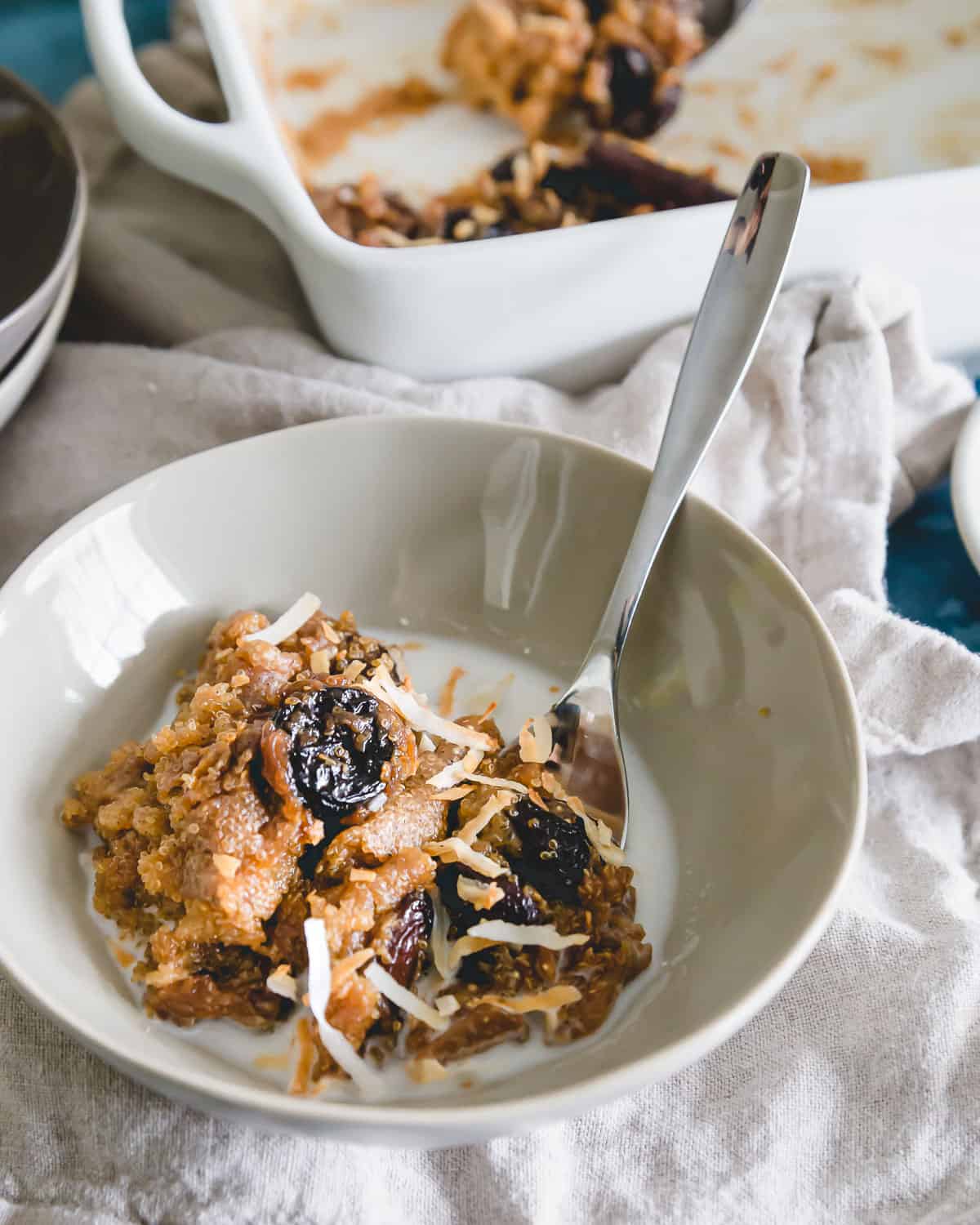
WHAT IS GELLAN GUM?
Gellan gum was discovered in the 70s when scientists found bacteria on a lily pad in a pond in Pennsylvania that produced a jelly-like substance. Through fermentation, gellan gum was able to be replicated for use.
It’s gluten-free, Kosher and Halal friendly as well as heat resistant, with non-GMO verified, as well as vegan and organic compliant, grades available.
Gellan gum is a nature-based, soluble dietary fiber that’s been approved by both the FDA and the European Food Safety Authority.
WHAT DOES GELLAN GUM DO?
Gellan gum helps keep foods from settling and separating. So in the case of nut milks, it basically helps keep the liquid more homogeneous and blended.
If you’ve ever made your own nut milk at home with just nuts and water you know you have to vigorously shake the mixture before use due to the settling. Gellan gum as an ingredient is what helps to avoid that in commercially produced nut milks.
WHAT IS GELLAN GUM USED IN?
Besides things like nut milks, you might find gellan gum used as a vegan alternative to gelatin in gummies (think candies or vitamins), in dairy products like yogurt to help with “creaminess” or suspending fruit evenly throughout the yogurt as well as bakery items and fillings.
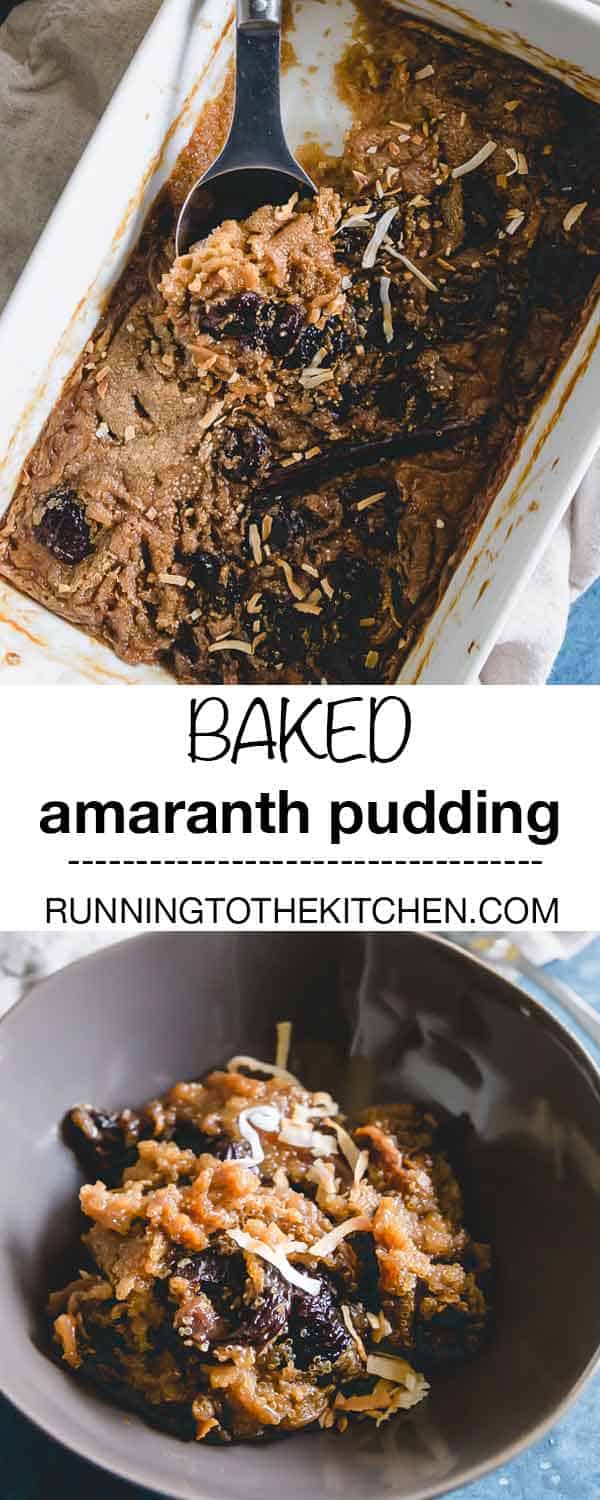
Hopefully that helps you feel a little more educated and at ease with some of the nut milk options out there if you choose to use a store-bought non-dairy milk in this baked amaranth pudding recipe.
If you go through “milk” as quickly as we do in our house (between coffee, smoothies, oatmeal and drinking we use a lot!), I think it’s important to be educated on the ingredients in that purchase!
More pudding recipes to try:
Creamy Orange Wheatberry Pudding
Panettone Apple Bread Pudding
Gluten Free Chocolate Strawberry Bread Pudding
Dirty Chai Tapioca Pudding with Oatmeal Raisin Cookie Crumble
Dairy Free Gingerbread Pudding
Baked Amaranth Pudding
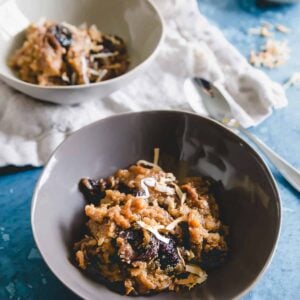
Ingredients
- 1/2 cup amaranth, rinsed
- 1/4 cup full fat coconut milk
- 1 cup unsweetened almond milk, or other non-dairy milk of choice
- 1 teaspoon vanilla bean paste, or vanilla extract
- 1/2 teaspoon almond extract
- 1 cinnamon stick
- 2 tablespoons maple syrup
- 1/2 teaspoon kosher salt
- 1/4 cup dried sweet cherries
- 1/4 cup unsweetened coconut flakes, toasted
Instructions
- Preheat oven to 350°F.
- Combine all the ingredients except the coconut flakes in a medium sauce pot. Bring to a boil then remove from heat and pour into a greased baking dish (*see note).
- Place the baking dish in the oven and bake for 50-55 minutes or until most of the liquid has been absorbed by the amaranth.
- Remove from oven, let cool for 5 minutes then spoon into bowl to serve.
- Top with toasted coconut flakes and pour additional almond milk in bowl if desired.
Notes
Nutrition
Nutrition information is automatically calculated, so should only be used as an approximation.
Gina Matsoukas is an AP syndicated writer. She is the founder, photographer and recipe developer of Running to the Kitchen — a food website focused on providing healthy, wholesome recipes using fresh and seasonal ingredients. Her work has been featured in numerous media outlets both digital and print, including MSN, Huffington post, Buzzfeed, Women’s Health and Food Network.
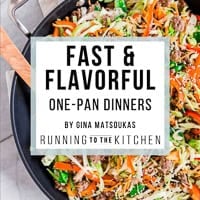
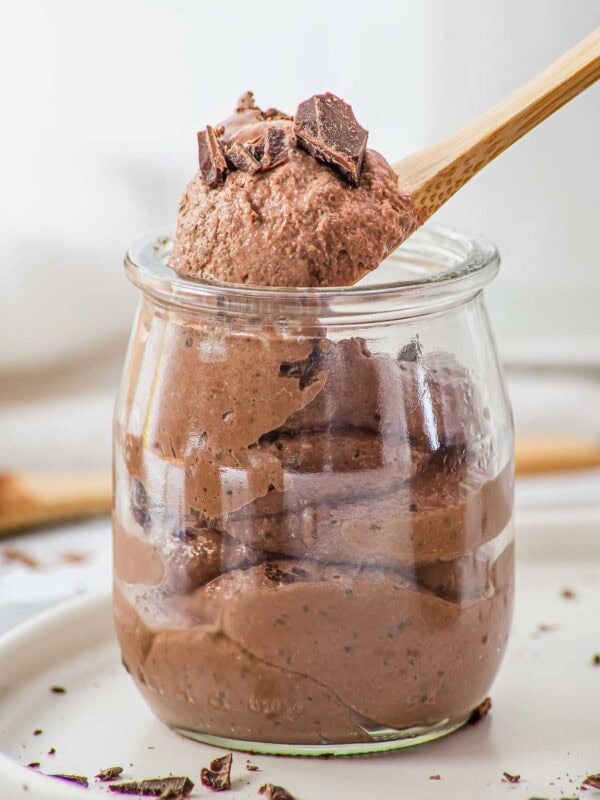
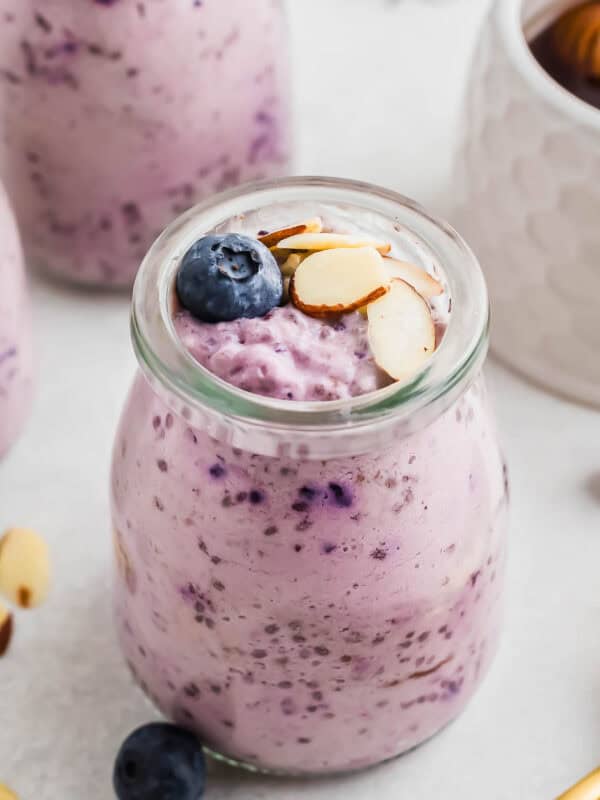
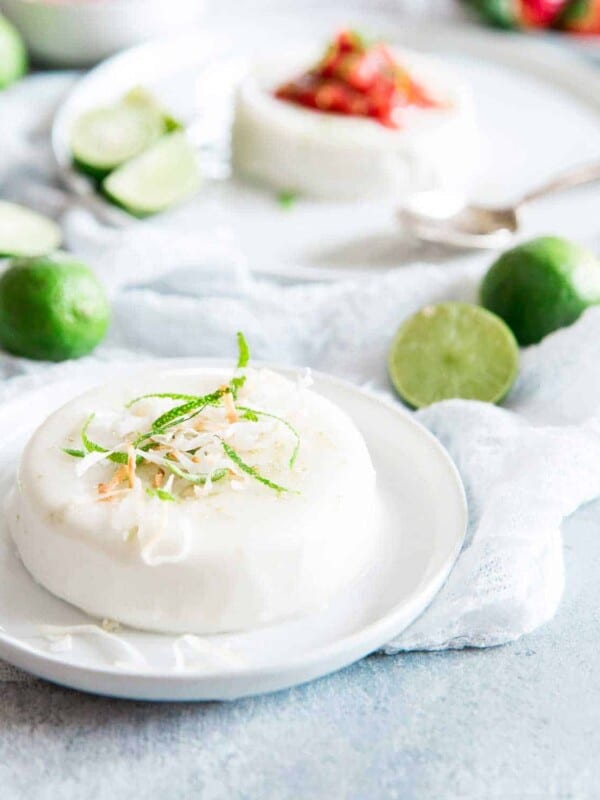
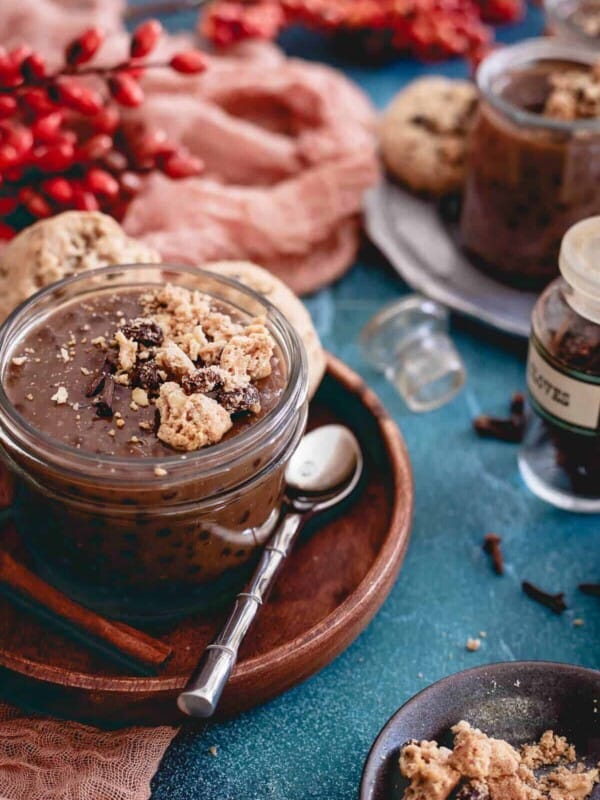








I’ve had a bag of amaranth in the cupboard, so I’m super excited to try this pudding!
What a brilliant idea. I have to make this for breakfast tomorrow. Can’t wait. Looks healthy and so delicious.
This looks delicious